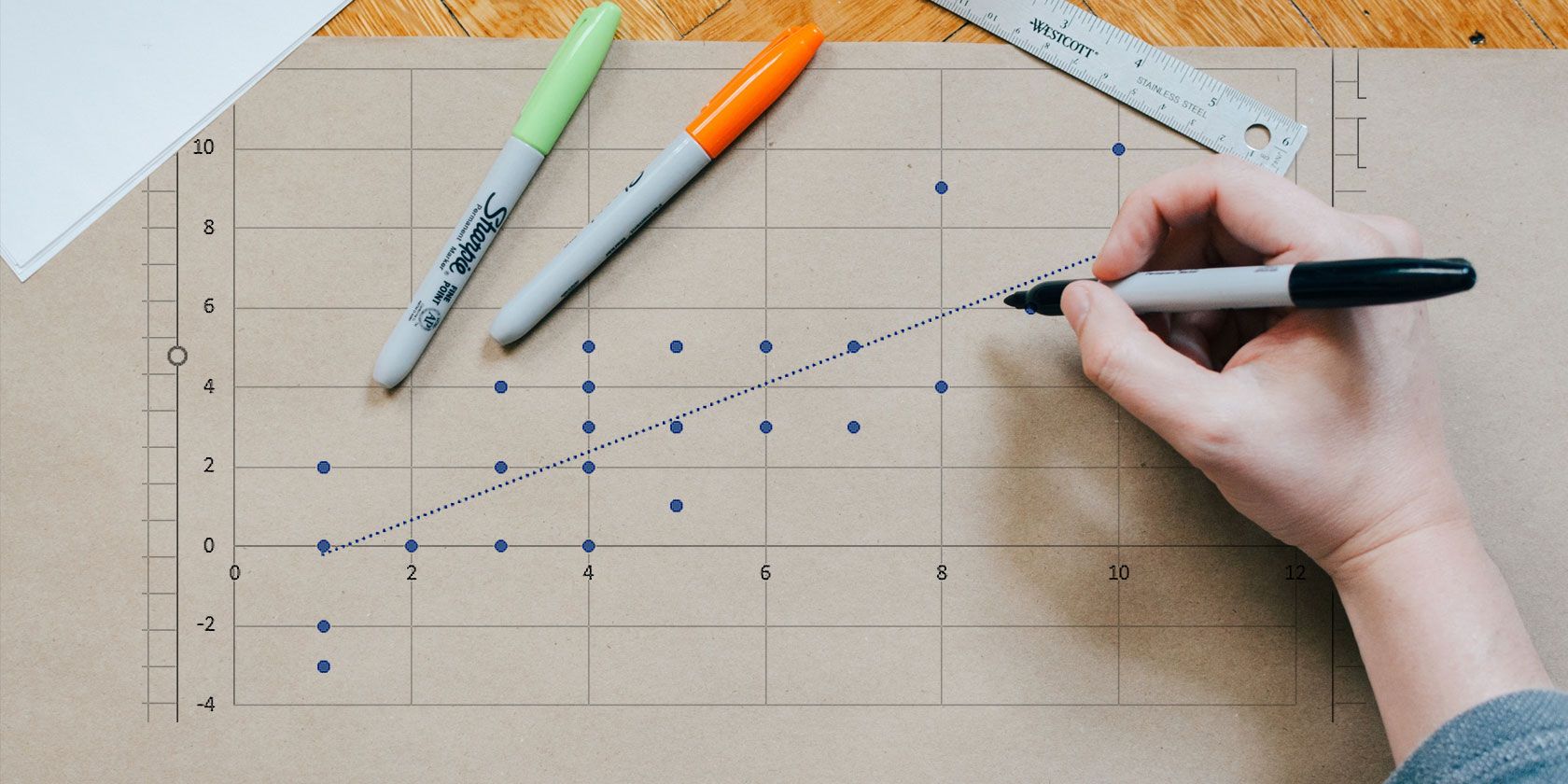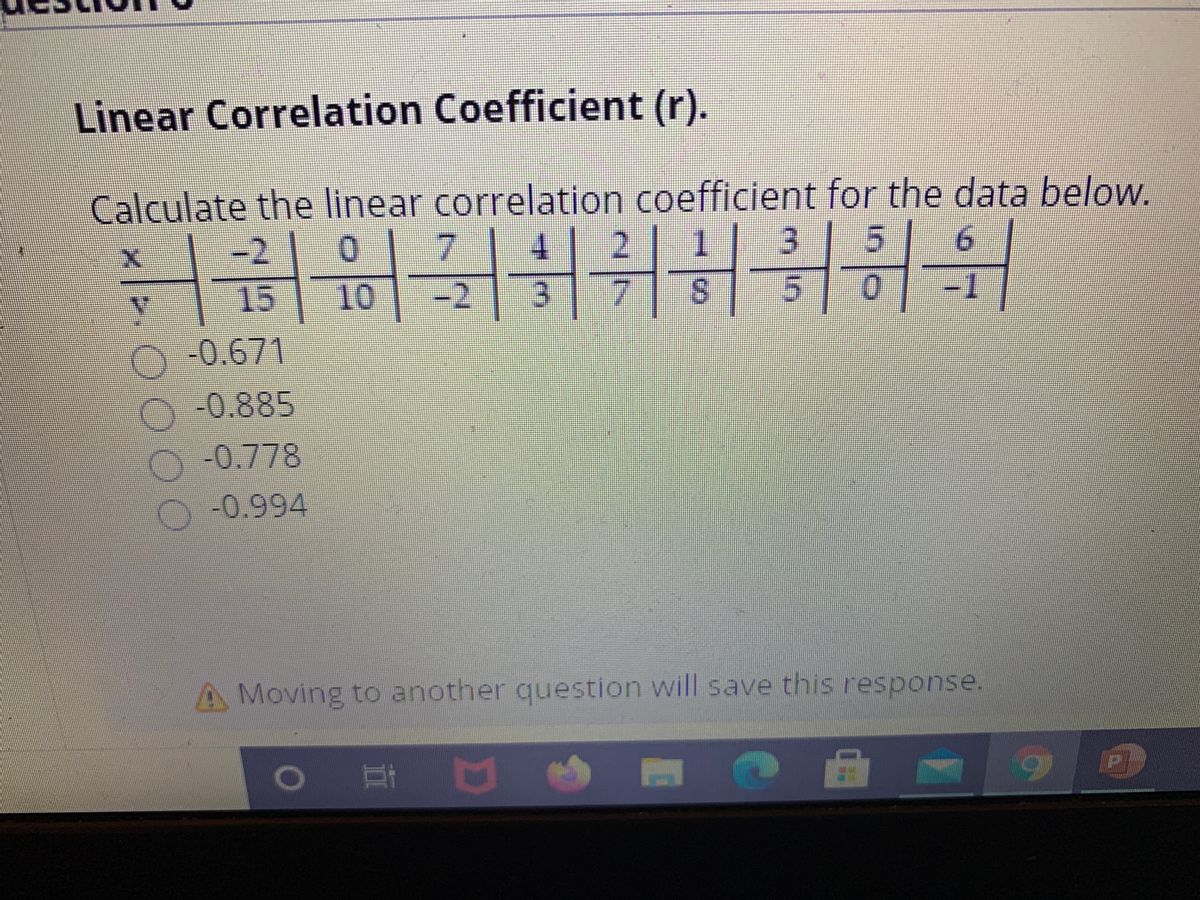10 Work How To Find A Correlation Coefficient Latest
9 Popular How To Find A Correlation Coefficient - The ‘correlation’ tool inside the analysis toolpak is what you use if you need to calculate the correlation coefficient of more than 2 variable sets. Pearson’s correlation coefficient is represented by the greek letter rho ( ρ) for the population parameter and r for a sample statistic.
 How to Find the Correlation Coefficient With Excel MakeUseOf . You see that the correlation function is negative in value, which means that both the stocks have a negative correlation.
How to Find the Correlation Coefficient With Excel MakeUseOf . You see that the correlation function is negative in value, which means that both the stocks have a negative correlation.
How to find a correlation coefficient

13 Sneaky How To Find A Correlation Coefficient. 1 is a perfect positive correlation. Press stat and then scroll over to calc. How to find correlation coefficient methods there are several ways to to find the correlation coefficient. How to find a correlation coefficient
The null hypothesis (h 0): To find correlation coefficient in excel, leverage the correl or pearson function and get the result in a fraction of a second. The correlation coefficient is calculated using the excel formula. How to find a correlation coefficient
The most common are by hand using a formula, within excel or open office, and using other similar software packages. This video will show you how to calculate the correlation coefficient, step by step. Then scroll down to 8: How to find a correlation coefficient
Multiply and find the sum. The formula was developed by british statistician karl pearson in the 1890s, which is why the value is called the pearson correlation coefficient (r). Correlation coefficient | types, formulas & examples published on august 2, 2021 by pritha bhandari. How to find a correlation coefficient
Here we have used the correl () function of excel to see the correlation coefficient for the 2 stocks. The product moment correlation coefficient ( pmcc or sometimes just. The correlation coefficient is generally the measurement of the correlation between the bivariate data which basically denotes how much two random variables are correlated with. How to find a correlation coefficient
Now, with the dynamic names defined, you can set up a data table to calculate the cross correlations. The most common formula is the pearson correlation coefficient used for linear dependency between the data sets. For xlist and ylist, make sure l1 and l2 are selected since these are the columns we used to input our data. How to find a correlation coefficient
Once you know your data sets, you'll be able to plug these values into your equation. Next, we will calculate the correlation coefficient between the two variables. Separate these values by x and y variables. How to find a correlation coefficient
For this example, we’ll be using a similar data set with the one above with the addition of ‘z variables’. It varies between 0 and 1. A correlation coefficient formula is used to determine the relationship strength between 2 continuous variables. How to find a correlation coefficient
The correlation coefficient the correlation coefficient, denoted by r, tells us how closely data in a scatterplot fall along a straight line. The closer that the absolute value of r is to one, the better that the data are described by a linear equation. If it is positive then there is positive correlation, with stronger positive correlation being closer to. How to find a correlation coefficient
Revised on december 2, 2021. Linreg (a+bx) and press enter. For a correlation coefficient of r = 0.56 and sample size n = 14, we find that: How to find a correlation coefficient
Divide the sum and determine the correlation coefficient. One of the graphs demonstrates a positive correlation coefficient. In statistics, bivariate data or two random variables are used to find the correlation between them. How to find a correlation coefficient
Pearson correlation coefficient is used to find the correlation between variables whereas cramer’s v is used in the calculation of correlation in tables with more than 2 x 2 columns and rows. The other graph has a negative correlation. Begin your calculation by determining what your variables will be. How to find a correlation coefficient
The three scatter plot graphs below represent example of data with different correlation coefficients. Correlation basically means a mutual connection between two or more sets of data. Correlation coefficient measures the relationship between two variables. How to find a correlation coefficient
Divide the sum and determine the correlation coefficient. This correlation coefficient is a single number that measures both the strength and direction of the linear relationship between two continuous variables. R r) is a number that tells you how correlated your data are. How to find a correlation coefficient
When the coefficient comes down to zero, then the data is considered as not related. The correlation coefficient (r) the sample correlation coefficient (r) is a measure of the closeness of association of the points in a scatter plot to a linear regression line based on those points, as in the example above for accumulated saving over time. Correlation is positive when the values increase together, and correlation is negative when one value decreases as the other increases a correlation is assumed to be linear (following a line). How to find a correlation coefficient
Correlation can have a value: 0.037285 recall that for a correlation test we have the following null and alternative hypotheses: What is strong and weak correlation? How to find a correlation coefficient
For example, a correlation coefficient of 0.2 is considered to be negligible correlation while a correlation coefficient of 0.3 is considered as low positive correlation (table 1), so it would be important to use the most appropriate one How to find a correlation coefficient
 Answered Linear Correlation Coefficient (r).… bartleby . For example, a correlation coefficient of 0.2 is considered to be negligible correlation while a correlation coefficient of 0.3 is considered as low positive correlation (table 1), so it would be important to use the most appropriate one
Answered Linear Correlation Coefficient (r).… bartleby . For example, a correlation coefficient of 0.2 is considered to be negligible correlation while a correlation coefficient of 0.3 is considered as low positive correlation (table 1), so it would be important to use the most appropriate one
/TC_3126228-how-to-calculate-the-correlation-coefficient-5aabeb313de423003610ee40.png) How to Calculate the Coefficient of Correlation . What is strong and weak correlation?
How to Calculate the Coefficient of Correlation . What is strong and weak correlation?
 🎖 Office Applications How to Calculate the Correlation . 0.037285 recall that for a correlation test we have the following null and alternative hypotheses:
🎖 Office Applications How to Calculate the Correlation . 0.037285 recall that for a correlation test we have the following null and alternative hypotheses:
Interpreting the Correlation Coefficient YouTube . Correlation can have a value:
 Correlation Formula Learn the correlation formula Cuemath . Correlation is positive when the values increase together, and correlation is negative when one value decreases as the other increases a correlation is assumed to be linear (following a line).
Correlation Formula Learn the correlation formula Cuemath . Correlation is positive when the values increase together, and correlation is negative when one value decreases as the other increases a correlation is assumed to be linear (following a line).
How to Find the Correlation Coefficient 11 Steps (with . The correlation coefficient (r) the sample correlation coefficient (r) is a measure of the closeness of association of the points in a scatter plot to a linear regression line based on those points, as in the example above for accumulated saving over time.
Correlation Coefficient (ρ) Formula, Example, Calculator . When the coefficient comes down to zero, then the data is considered as not related.
 How to create a scatter plot and calculate Pearson's . R r) is a number that tells you how correlated your data are.
How to create a scatter plot and calculate Pearson's . R r) is a number that tells you how correlated your data are.
 Maths Tutorial Pearson's correlation coefficient . This correlation coefficient is a single number that measures both the strength and direction of the linear relationship between two continuous variables.
Maths Tutorial Pearson's correlation coefficient . This correlation coefficient is a single number that measures both the strength and direction of the linear relationship between two continuous variables.